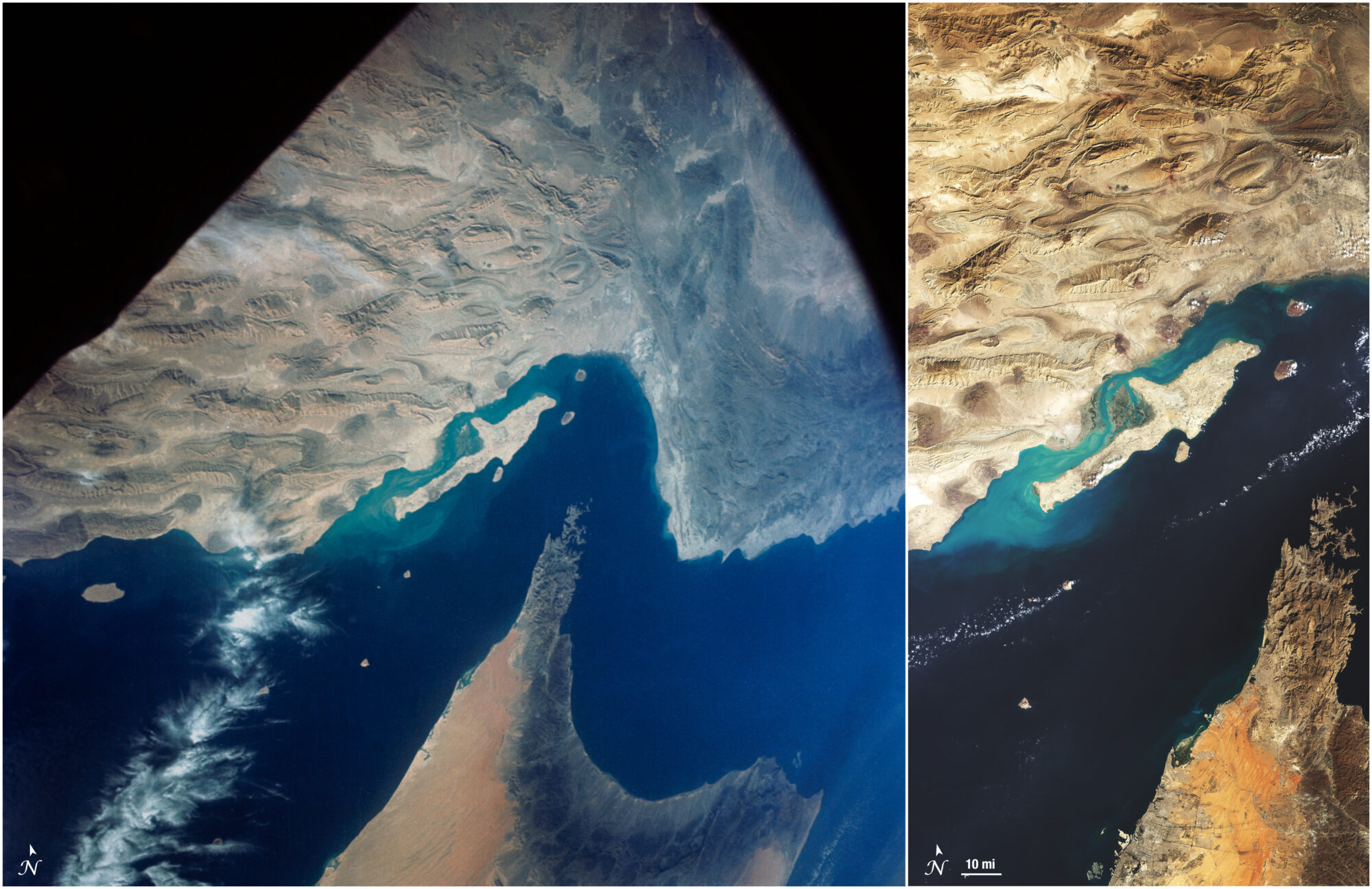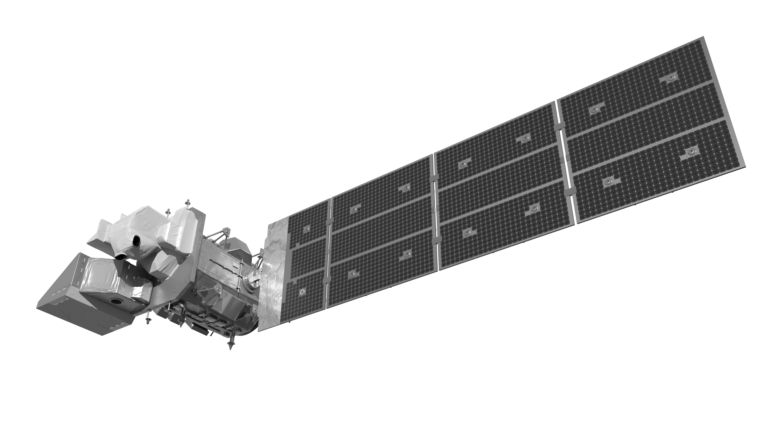
Celebrating 53 Years Since Landsat 1’s Launch
When the first Landsat satellite launched in 1972, it posed the following question: could we manage our natural resources using remotely–sensed data? The answer, 53 years on, is a resounding “yes.”
Landsat Science
The joint NASA/USGS Landsat program provides the longest continuous space-based record of Earth’s land in existence. Landsat data are essential for making informed decisions about Earth’s resources and environment.
Landsat Science
The joint NASA/USGS Landsat program provides the longest continuous space-based record of Earth’s land in existence. Landsat data are essential for making informed decisions about Earth’s resources and environment.
Landsat Science
The joint NASA/USGS Landsat program provides the longest continuous space-based record of Earth’s land in existence. Landsat data are essential for making informed decisions about Earth’s resources and environment.
Landsat Science
The joint NASA/USGS Landsat program provides the longest continuous space-based record of Earth’s land in existence. Landsat data are essential for making informed decisions about Earth’s resources and environment.
Satellites
Data
Benefits
Satellites
Data
Benefits

When the first Landsat satellite launched in 1972, it posed the following question: could we manage our natural resources using remotely–sensed data? The answer, 53 years on, is a resounding “yes.”

In the 1960s, NASA was pioneering a new era of human spaceflight—and astronaut photography—that would change Earth observation forever.

Discover how Landsat’s 50-year record of Earth helps scientists track the health of coastal ecosystems while providing tools to monitor water quality and reveal changes at the edge of land and sea.

Landsat-based National Land Cover Database (NLCD) helps predict hurricane wind risk to homes and other structures.

When the first Landsat satellite launched in 1972, it posed the following question: could we manage our natural resources using remotely–sensed data? The answer, 53 years on, is a resounding “yes.”

In the 1960s, NASA was pioneering a new era of human spaceflight—and astronaut photography—that would change Earth observation forever.

Discover how Landsat’s 50-year record of Earth helps scientists track the health of coastal ecosystems while providing tools to monitor water quality and reveal changes at the edge of land and sea.

Landsat-based National Land Cover Database (NLCD) helps predict hurricane wind risk to homes and other structures.

When the first Landsat satellite launched in 1972, it posed the following question: could we manage our natural resources using remotely–sensed data? The answer, 53 years on, is a resounding “yes.”

In the 1960s, NASA was pioneering a new era of human spaceflight—and astronaut photography—that would change Earth observation forever.

Discover how Landsat’s 50-year record of Earth helps scientists track the health of coastal ecosystems while providing tools to monitor water quality and reveal changes at the edge of land and sea.

Landsat-based National Land Cover Database (NLCD) helps predict hurricane wind risk to homes and other structures.
“New sensors are nice, but can’t let us see back in time. Happy 17th!”
“It’s a fantastic time to be a user of satellite data, if you’re in that moderate resolution domain this is amazing. The Sentinels and Landsat together is going to be really a game changer. It truly is.”
“The first step of ecosystem accounting is to actually map the dynamics of ecosystems over time.”
“It’s really by stepping back and looking at the Earth, observing these changes in their context from space, can we really understand what’s happening.”
“Satellite imagery can be used retrospectively, meaning that the data collected by satellites today will probably help solve issues we are not currently even aware of—an advantage which is invaluable.”
“We are learning more about cool things to do with Landsat at a faster rate than anytime in the past.”
“An alert system operating at the scale presented here depends on systematic global acquisitions, robust preprocessing, and free and accessible data. Only Landsat has these criteria at medium spatial resolutions, with Sentinel aspiring to emulate Landsat.”
“There is a sensor in the Landsat satellite which measures the intensity of the reflected radiation back into space. What if we could use satellite imagery from the Landsat program to find fossils?”
“Since late 2008, when Landsat data was made available to all users free of charge, over 22 million Landsat scenes have been downloaded through the USGS-EROS website—and the rate of downloads is still increasing.”
“By unleashing the power of our vast and open data resources, the Climate Data Initiative helps spark private sector innovation and will leverage resources for those on the front lines who are dealing with climate change. We are pooling into one place data from across the federal government to make it more accessible to the public and we hope our efforts will inspire other countries to follow suit.”
“In a world of scarce resources, there are distinct tradeoffs in costs and benefits of land use, and whether to conserve or convert forest to cropland. Map-based images are perhaps one of the most succinct means of helping policymakers digest complex ideas of social and economically driven environmental change.”
“The USGS’s Landsat mission has an incredible 40-year record of the planet’s changing landscape, with virtually every spot imaged every eight days. It’s an incredible scientific asset.”
“I don’t think anyone could have seen this before these new maps were developed.”
“I have really appreciated being able to use Landsat data as a ‘time machine’ to understand our changing environment.”
“Landsat data gives us a fuller picture of the planet we live on and the resources humanity needs to survive.”
“We wouldn’t be where we are today without Landsat paving the way.”
“LANDFIRE is the only complete, nationally consistent collection of spatial resource datasets with an ecological foundation.”
“We did a study… where we were looking at the main drivers of change in mangrove forests on a global scale. And we would not have been able to do that if it wasn’t for Landsat data and the standardized, well-calibrated data sets that come out of Landsat.”
“We hope to accelerate innovation in climate research, humanitarian relief, and disaster preparedness efforts around the world by making Landsat data readily available near our flexible computing resources.”
“Landsat is widely considered to be a crucial national asset, comparable to the satellite-based GPS system and National Weather Service satellites. Ready access to Landsat images supplies a reliable common record of Earth conditions that fosters the mutual understanding of environmental challenges by citizens, researchers, and decision makers worldwide.”
“Without Landsat, we’d still be in the Dark Ages of tracking global forest carbon using spreadsheet models.”
“The Deltares Aqua Monitor is the first global-scale tool that shows at 30-m resolution where water is converted to land and vice versa. With assistance from Google Earth Engine, it analyzes satellite imagery from multiple Landsat missions, which observed Earth for more than three decades, on the fly.”
“If you don’t know what Landsat (NASA/USGS) and Sentinel-1/Sentinel-2 (ESA) are, they are scientific Earth observation missions involving large, exquisitely calibrated satellites that capture imagery of the entire globe on a regular cadence. Landsat is celebrating its 50th anniversary this year. In fact, there have been 9 different satellites bearing the Landsat name over those five decades—Landsat 9 was launched last year! The data they produce is open and hosted freely for anyone to access. Pr…
“Agricultural engineer Jean-Francois Pekel and colleagues have created a kind of virtual time machine, showing past changes in surface water and providing a baseline for charting the changing future of our watery world. To achieve this feat, Pekel and colleagues used more than 3 million Landsat images of Earth’s lakes, wetlands, and rivers taken between 1984 and 2015.”



The Landsat program consists of a series of Earth-observing satellite missions jointly managed by NASA and the U.S. Geological Survey (USGS). Since 1972, Landsat satellites have continuously acquired images of the Earth’s land surface and provided an uninterrupted data archive to assist land managers, planners, and policymakers in making more informed decisions about natural resources and the environment.